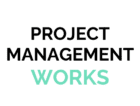I was in a meeting earlier this week that was typical of so many project meetings I have attended. A rough agenda had been drawn up by the person chairing the meeting but no-one else had seen it before the meeting started so we didn’t quite know what to expect. And one person was allowed to dominate the conversation so we didn’t really achieve anything (but I don’t know what we expected to achieve anyway as no objective had been stated).
Unusually it didn’t drag on too long as the meeting room had only been booked for half-an-hour and another group were at the door before we had concluded the meeting. I, for one, left with a sense of dissatisfaction and it made me think about how the meeting should have been run.
So here are my 10 steps to a perfect project meeting:
- Agenda: Write a detailed agenda and send it out to all participants before the meeting so they have time to read it and gather any information they may want to bring along.
- Purpose: Inform everyone of the objective of the meeting in advance and tell them again at the start of the meeting. Remind people during the course of the meeting if the conversation is losing direction.
- Agreement: At the end of each agenda item do a quick summary and seek everyone’s agreement on the issue.
- Distractions: If issues are raised that are not on the agenda then you must defer them to another meeting and stay focussed on the purpose of the current meeting.
- Domination: Don’t allow one individual to dominate the discussions. If necessary, interrupt anyone who is doing this and remind them of the need to allow everyone the opportunity to speak.
- Opinions: Many people are unwilling to speak out at meetings but actively encourage opinions from all participants in order to get a broader view on all the issues being discussed.
- Boredom: The signs of boredom are easy to spot and start to crop up as meetings approach an hour long. Keep the meeting to no more than an hour wherever possible to prevent tedium setting in.
- Actions: Draw up an action plan during the meeting showing who is responsible for each action raised and the date by which it must be completed.
- Summary: Summarise what has been achieved at the end of the meeting (and if you have followed these steps then you will have achieved something).
- Minutes: It is important to have a written reminder of what was discussed, agreed and accomplished at a meeting so send out the written minutes and action plan as soon afterwards as possible.
